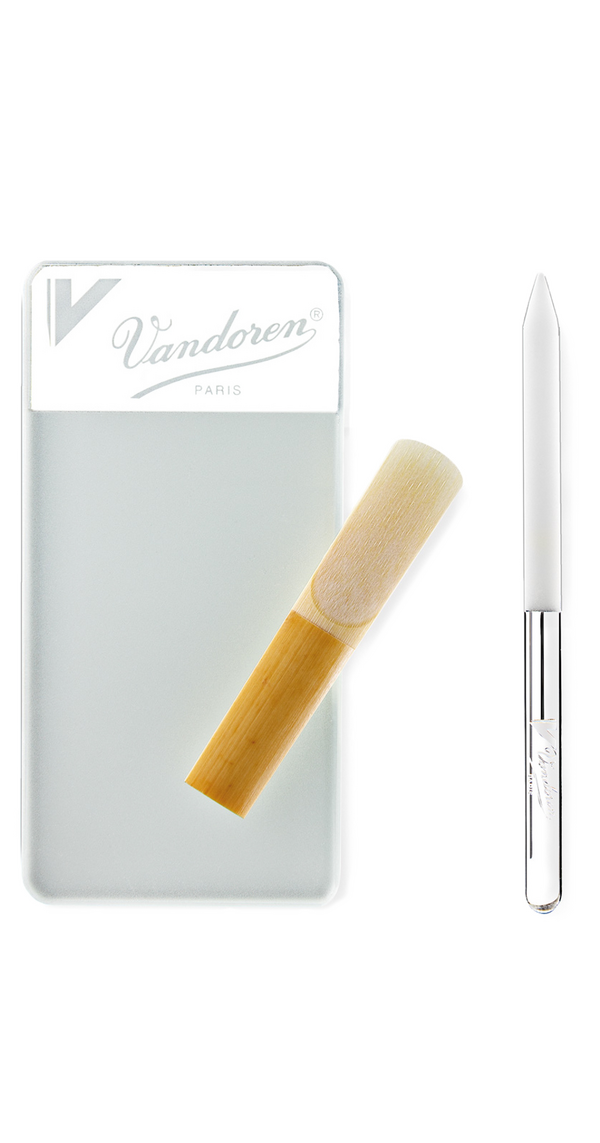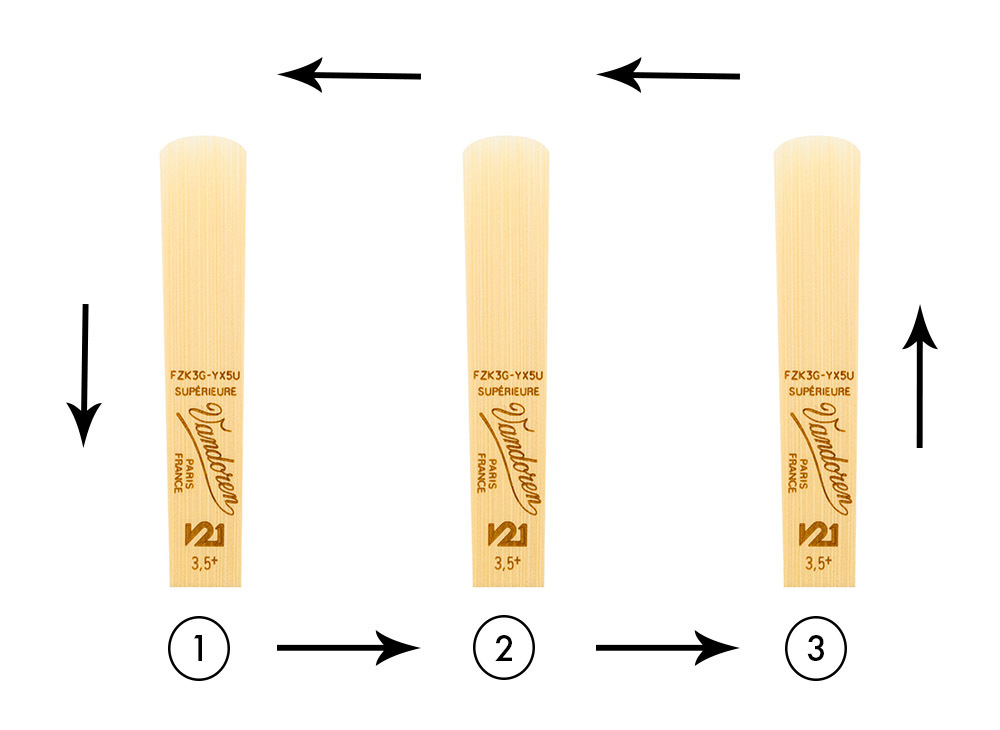Updated July 27, 2020
Reeds are made from a plant called Arundo Donax which is often referred to as cane. Because of this, reeds are subject to change based on the environmental factors such as weather and altitude. It is important to have some tricks up your sleeve to minimize these issues and have reeds that work for you!

1. Warped Reeds?
- A common issue is that the table swells. An easy way to point this out is by placing the reed table side down on a sheet of glass and tapping the base of the reed. If you notice the base of the reed is not lying flat on the glass it is most likely warped
- An easy way to fix this is to grab a sheet of glass and 800 grit, or higher, sandpaper, or a Vandoren Reed Resurfacer, and rub the table of the reed on the sandpaper to flatten it
2. Prevent Warping
- Your reeds are probably warping because you are not allowing them to dry properly.
- Storage is key
- Vandoren’s Hygro Case is designed to maintain your reeds in optimal humidity conditions. Using the disk in the front of the case you are able to easily tell when the sponge needs to be dampened. The disk will turn blue when water is needed.

3. Breaking in Reeds
- Soaking a reed right out of the box is the first time in years that it meets with moisture. Because of this practicing on a new reed can greatly shorten the life of the reed. Although it might be tempting to play the reed right out of the box breaking it in will prove to lengthen the life and quality of the reed.
- For the first 3 days of the break in process you should not play on those reeds for more than a few minutes a day. This will allow the reeds to get grow accustom to the exposure to moisture.
- Begin gradually using the reeds from longer periods of time. A week to 10 days is a suitable amount of time to break in your reeds.
4. Rotate Your Reeds
- Once the reeds are broken in you can begin rotating them regularly.
- Constantly playing the same reed will cause the reed to wear out very fast! Playing on worn out reeds also weakens your embouchure.
- Having a few reeds that you alternate using throughout the day will allow your reeds time to rest between uses and increase its overall life span!

5. Play On a Comfortable Strength
- Students often associate reed strength with skill level but this is false.
- Reed strength can be dependent on many factors, like mouthpiece facing and tip opening.
Soft Reed Strength Troubleshooting
If you play on reeds that are too soft you may encounter:
- Intonation issues
- Unfocused or nasally sound
- Thin upper register
Hard Reed Strength Troubleshooting
If you play on reeds that are too hard you may encounter:
- Muffled tone
- Low register is not speaking clearly
- Consistently sharp
- Talk to your band director or private teacher to make sure you are playing on a reed that works for you!
Although a variety of factors can cause reeds to change, having some tricks to minimize these issues will allow you to always have a good reed and a great music making experience!